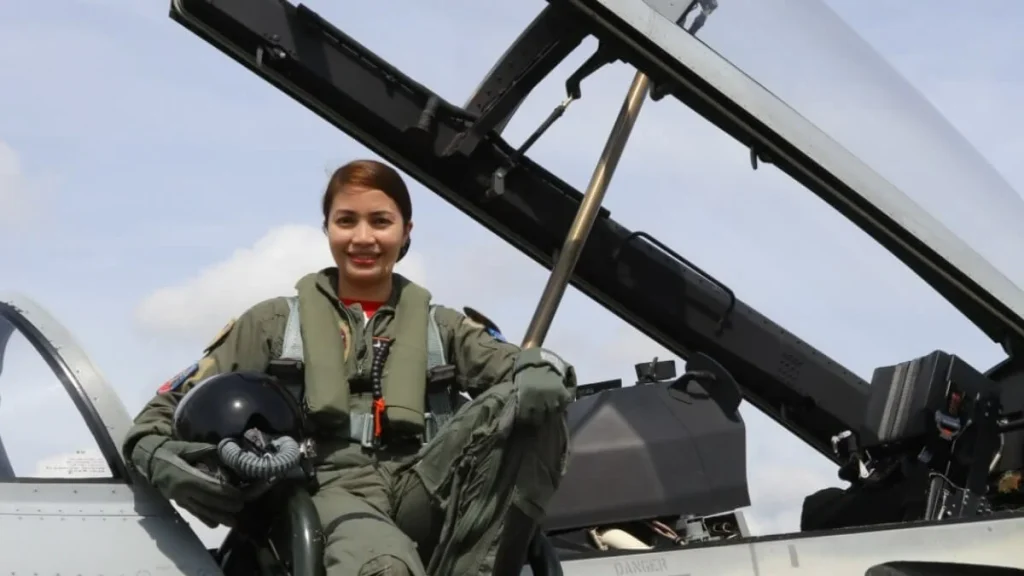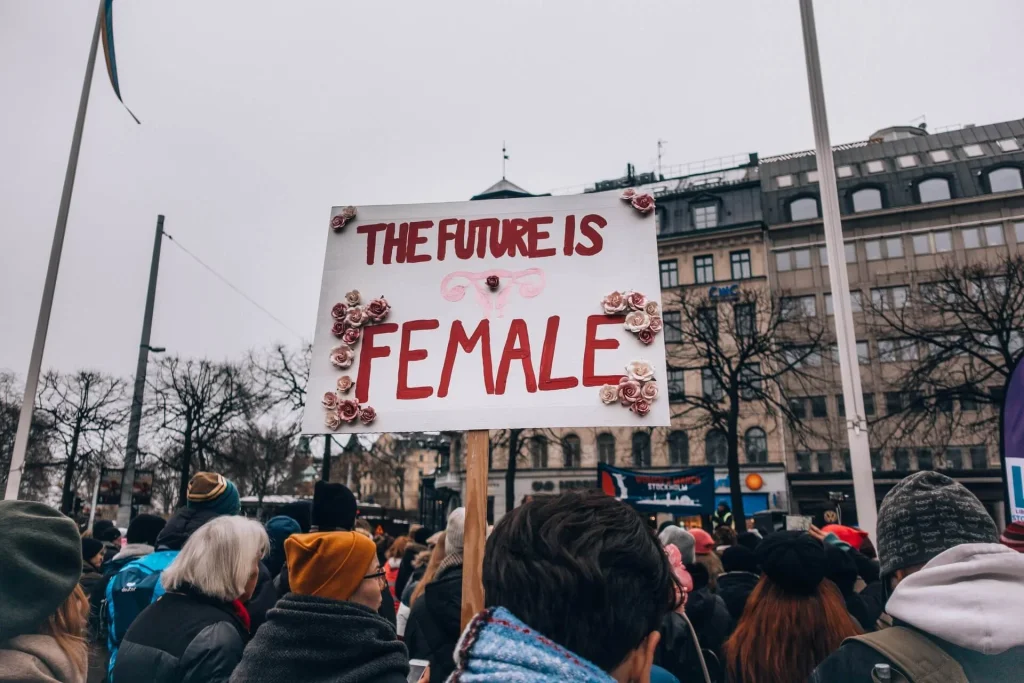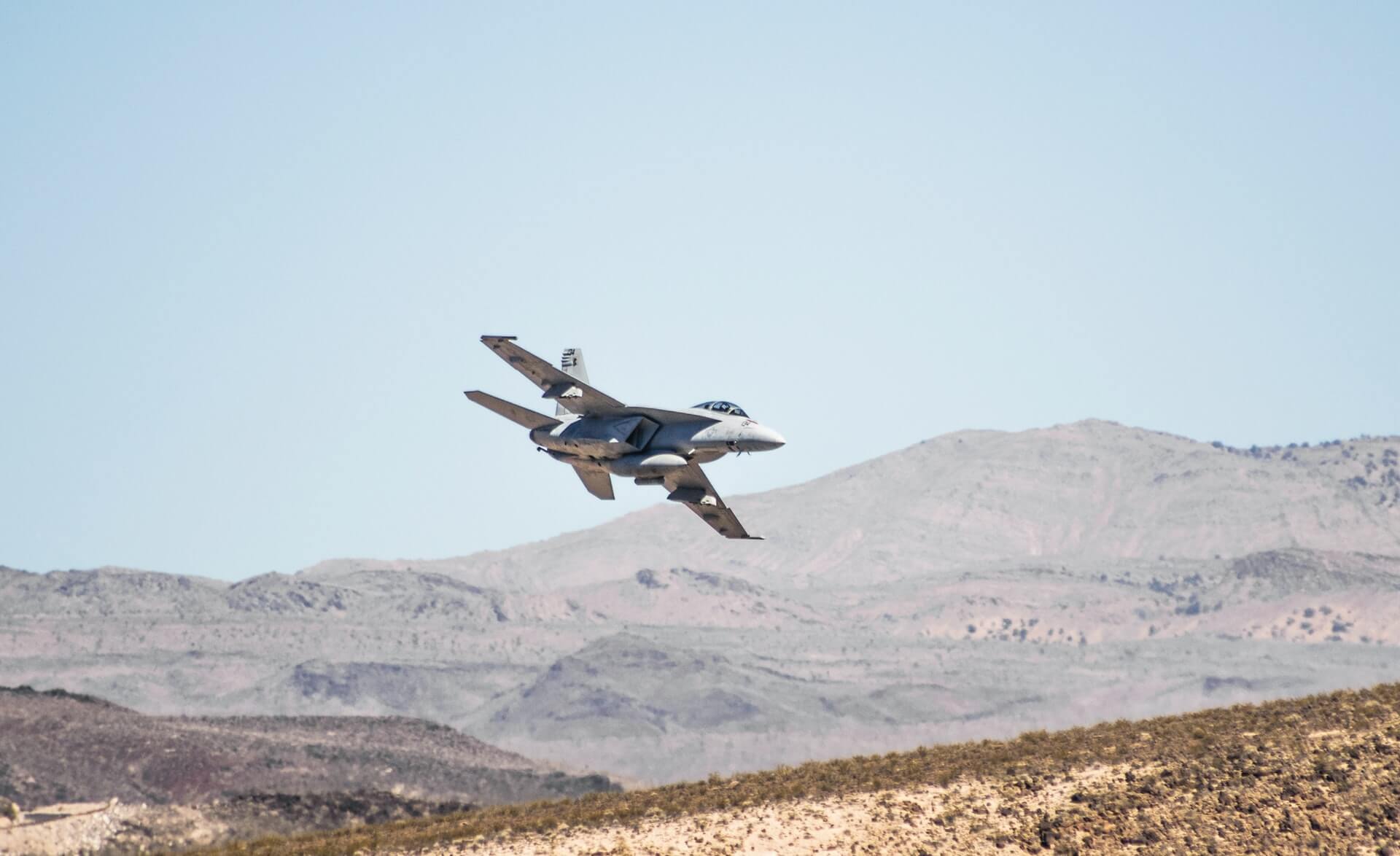Earlier this week, the Philippine Air Force introduced their first-ever female Fighter Pilot at the Basa Air Base in Floridablanca, Pampanga.
PAG Spokesman Col. Maynard Mariano said that 1Lt. Jul Laiza Mae Camposano-Beran came from the 5th Fighter Wing and was checked out as the AS-211 light jet combat aircraft combat mission-ready pilot and wingman. “As we celebrate the National Women’s Month this March, the Philippine Air Force joins in recognizing the significant role of women in our organization and society. Salute to all women,” Col. Mariano said in his statement.
In that same breath, we wanted to cover what this means for the future of women in the Philippine army and the increasing level of involvement that they have in the world economy. This is a great news development for women and a great step in the right direction for gender equality.
What Is The Air Force?
For those of you unfamiliar with militaristic terms, the air force is the national military branch that primarily conducts aerial warfare, an entirely different faction from the army and the navy – both of whom are responsible for conducting combat on the ground and on the seas respectively. Typically, the air force is responsible for gaining control of the air, carrying out strategic and tactical bombing missions, and providing support to land and naval forces often in the form of aerial reconnaissance and close air support.
Air force may also refer to a tactical or numbered air force, which is an operational formation wherein aeronautical vehicles from either one national air force or several air components from allied nations congregate and organize to achieve a specific goal.
In that same breath, air forces should also command and control other air defence assets such as anti-aircraft artillery, surface-to-air missiles, or anti-ballistic missile warning networks and other defensive systems. Obviously, these instruments could also be organized by a governing body separate from the air force and focusing solely on air defense.
Outside of actual wartime activities, the air force is responsible for peacetime activities including air policing and air-sea rescue. What else do they do? Well, it’s difficult to cover all aspects of the air force in such a short breath but in the most general sense, the mission of the Air Force is to defend the nation through the control and exploitation of air and space. Man was not meant to fly, otherwise, we’d have wings, but that doesn’t mean that the threats to different nations stop at land and sea. With a focus on agile combat support and rapid global mobility, having an air force at your beck and call means that one has the ability to push and position forces rapidly anywhere in the world ensuring unprecedented responsiveness alongside sustainable, flexible, and efficient combat operations that deliver on a specific mission, with minimal risk and collateral damage on friendly units, of course.
History of Jet Fighting In The Philippines
The Philippine Air Force began as the Philippine Army Air Corps and was primarily established as a separate branch of the Armed Forces of the Philippines on July 1, 1947, under the administration of President Manuel Roxas.
Was this the official start of the Philippine Air Force? Yes. Does this mean that no distant cousin of the Philippine Air Force could be found beforehand? Of course not. The Philippine Air Force’s origins can be traced back as early as 1917 during World War I. In 1916, the passage of the Jones Law in the U.S. Congress was a momentous event for the Philippines. Through the law, the pledge of eventual independence – once Filipinos were ready for self-governance- was made.
“The Jones Law led to the creation of an all-Filipino legislature composed of the Philippine Senate and House of Representatives. At the time, the Constabulary and the U.S. Army remained at the forefront of the country’s defense under the U.S. War Department. Filipinos were also at first generally barred from joining the Constabulary. But civil positions were slowly being opened to Filipinos.
It was in this context that before the breakdown of the bilateral relations between the United States and Germany that culminated in a declaration of war on April 6, 1917, the Philippine Legislature, led by Senate President Manuel L. Quezon, offered the United States assistance by providing a whole division of Filipino troops.”, writes the Official Gazette of the Philippines.
After the war, the Philippine Army Air Corps was later reorganized by U.S. Army Air Corps Lieutenant Colonel John Ryan by activating the first two PAAC units on May 15, 1945: the 1st Air Engineering Squadron under Second Lieutenant Alejandro Ojeda and the 1st Air Materiel Squadron under Lieutenant Mariano Gomez.
On July 1, 1946, the Philippine Army Air Corps was then converted to become the Philippine Air Force under Executive Order No. 94 during the administration of President Manuel Roxas. Under Section 107, the PAF was established as one of the three separate Major Commands of the Armed Forces of the Philippines Regular Force, the other two being the Philippine Ground Force and the Philippine Naval Patrol. Uncoincidentally, Roxas also became the first Philippine president to use aircraft on a regular basis.
Today, the PAF, like many other air force branches around the world, is responsible for both defending the Philippine Airspace and conducting aerial operations all throughout the Philippine islands, including but not limited to close air support operations, combat air patrols, aerial reconnaissance missions, and aerial humanitarian operations. Today, the PAF is headquartered at the Villamor Air Base in Pasay and is headed by the Chief of the Air Force, who also serves as the branch’s highest-ranking military officer.
Who Is Jul Laiza Mae Camposano-Beran?
Jul Laiza Mae Camposano-Beran is a native of Tulunana, Cotabato and a member of the Philippine Military Academy Sinaglahi class of 2015.

Jul Laiza Mae Camposano-Beran: First female fighter pilot of the PH Air Force | Photo from reportr.world
Upon graduation, she became the fifth female in the academy to receive the Athletic Saber Award, a feat that she accomplished over 170 of her other classmates in the batch. This award is given to the cadet who displays an elite athletic prowess that flies well above and beyond all other cadets.
In 2017, she graduated from military pilot training at the Philippine Air Force Flying School.
“Maraming mga female pilots na lumipad ng S211 pero not the version na AS211, ‘yung warrior natin. So the difference is actually siya ay dumaan sa tinatawag nating fighter fundamentals or combat crew training sa S211 as a prerequisite to be a fighter pilot (We have many female pilots who learned how to fly the S211 but not the warrior version that is the AS211. So the difference is she actually underwent fighter fundamentals or combat crew training in S211 as a prerequisite to be a fighter pilot),” Col. Maynard Mariano, PAF spokesperson, explained.
“That is something that most of the female pilots before who underwent the S211 that did not experience. This means that this is really our program of instructions for our fighter pilot and she finished that,” he added.
What Does This Mean Moving Forward
As Manila Bulletin states, Camposano-Beran is now being prepared for greater heights. She is undergoing further training to become an FA50 advanced fighter jet pilot.
“It’s not gonna be long. Probably after 300 flying hours, she will be evaluated if she is ready for FA50. If she is, then she can transition to the FA50. But then, she is already flying as a backseat pilot in the FA50, and in fact, she has a combat experience as a backseat pilot in the FA50,” said Col. Maynard Mariano, PAF spokesperson.
Outside of her own achievements, hopefully, this means that we see women as capable of holding positions of authority, positions that many initially believe to be only applicable to men. Hopefully, this helps people see that women are every bit as capable of being good fighter pilots, medical professionals, and political leaders as men. The same could even be said of their ability to dominate the corporate boardroom.
According to a new Pew Research Center survey on women and leadership, many individuals find women indistinguishable from men on key leadership traits such as intelligence and capacity for innovation, with many even highlighting the fact that they’re stronger than men in terms of being compassionate and organized leaders.
Unfortunately, even despite this apparent lack of an emotional and intellectual gap, many people perceive women to be less capable in authority positions. Obviously, this does not hold true – as history has shown us time and time again.

How Can We Celebrate National Women’s Month
A quick disclaimer for those reading onward, this section is not to say that Camposano-Beran only became a fighter pilot due to her gender, it’s a mere coincidence that her awarding came during the celebration of National Women’s Month. That said, her reward is a perfect segue to mention how else we can celebrate the women in our lives, empower them to achieve more, and provide them opportunities so that they could do more
1.) Explore the history of women’s rights
The theme of Women’s History Month this 2022 is “Providing Healing, Promoting Hope”. It’s a tribute to the ceaseless work of caregivers and frontline workers during this ongoing pandemic and also a recognition of the thousands of ways that women of all cultures have provided. Make sure that you’re able to understand the history of women, where they’re coming from, and the journey that they had to go through to get there.
2.) Be aware of the issues that women face today
Even despite the progress, there are still many areas where women face obstacles because of their gender. Take, for example, women still earn less on average than men, carry the majority of household and childcare responsibilities yet continue to face workplace stigmas and double standards, as well as being under-represented in leadership across all countries, STEM careers, and politics. Plus, there’s domestic violence, sexual harassment, trafficking, and rape culture. Issues surrounding women are still prevalent to this day.
3.) Support A Women’s Nonprofit
One of the best ways to help and support national women’s month is by supporting a nonprofit. There are many great nonprofits, big and small, that all work together in an attempt to move the needle toward gender equality. All of them could use any form of help, no matter how little, make sure you can find a way to pinch in. Remember that when enough people pitch in, a pinch of generosity compounds exponentially into a mountain of progress and happiness for all.
4.) Write Thank You Notes To The Women In Your Life
If you think the last couple of suggestions were a bit too much, you can start out simple and small – just write simple thank you notes to the women in your life. Be it a grandmother, your wife, or your mom, make sure that they know just how much you appreciate them. This is a perfect gesture if you’re the type of person who isn’t really vocal with their love and affection but would like to show it anyway.
If you’re looking for an inclusive community filled with individuals who are accepting of you and your quirks no matter how different you may think you are, then look no further than the properties we offer here at Crown Asia Real Estate. As one of the leading property developers in the Philippines for over 25 years, we’ve made it our absolute mission to be able to provide the best homes and communities for the people in the estate. Full-time property managers and round-the-clock personnel all work towards building a safe space for you and your family. Community events foster a communal bond and help breed opportunities through constant networking within the neighborhood.
If you’re looking for the perfect community to raise a family and help them believe that, no matter the dream, they could be who they want to be, then look no further than Crown Asia.
Related Blog: Historic: Philippine Women’s Team Qualifies for FIFA World Cup


